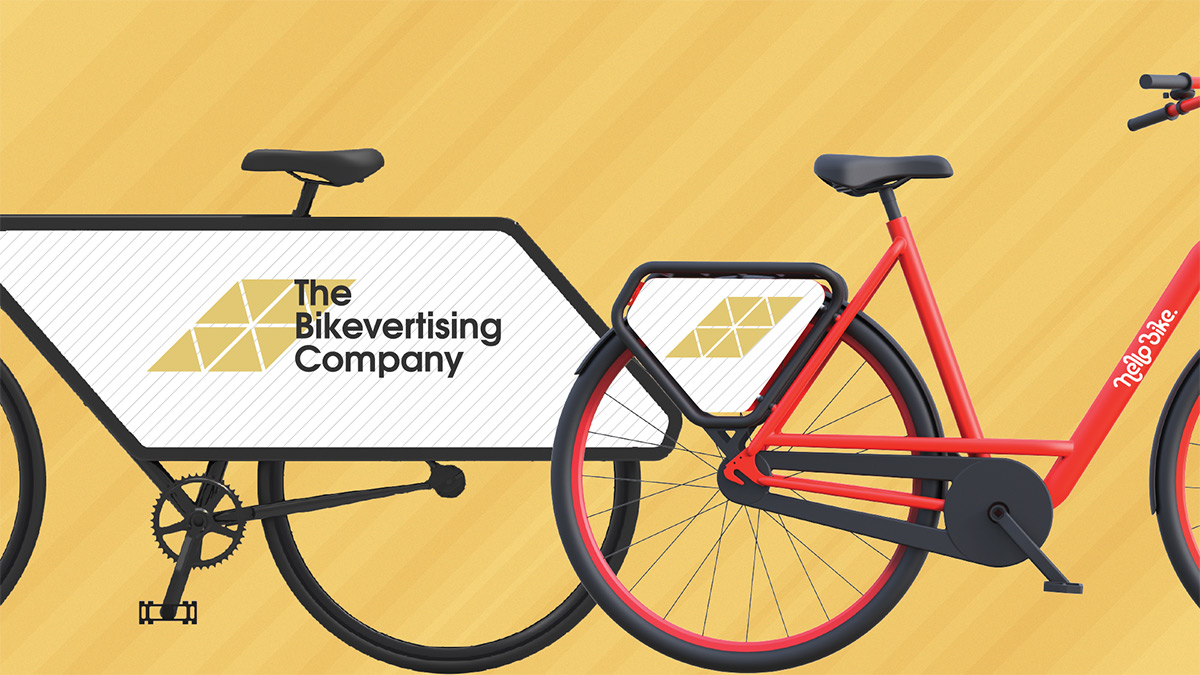Free Floating, Hybrid or Docking?
Also available in Dutch.
When creating a public bike share system, one of the first questions that will inevitably arise is how to utilise public space while satisfying all of the parties involved. Most especially your citizens because the most significant purpose of a public bike share system is to improve their daily mobility.
While there are many upcoming bike share schemes, we can distinguish three main forms of parking-systems (the actual ways in which we use public space while utilising bikes over a specific area). These are:
- Docking Stations
- Free Floating
- Hybrid
Docking Stations
Since the beginning of the bikeshare movement there have been docking stations. A docking station is a physical piece of street furniture that exclusively provides a parking spot for rental bikes. This is the first form in which we have seen bike share schemes. The reason for this was that there were no smart-locks or digital parking zones possible since the digitalisation of bike share is relatively new.
Suggested read:
Bike Share: The Dawn of the Smartbike (and the Death of Dock-Blocking)
Pros:
- Order in the public space, the government can decide how many bikes are parked at which point in the city.
Cons:
- Very expensive street furniture that cannot be removed easily if required
- If we can say, on the basis of user data, that more bikes are needed at a certain pick up point or that some stations are not being used at all we cannot easily change our set-up of parking and dropzones.
Free Floating
Lately, multiple free floating bike share schemes, mostly from China, have emerged.
A free floating system’s main appeal is that a user can pick up and drop off the bike at any location of their choosing. A ten out of ten for usability but experience has already shown us that the bikes ‘pollute’ the city environment. Users tend to interpret ‘a bike that you can park anywhere’ very literally. People will often hastily discard the bikes on the pavement creating a nuisance for pedestrians. Sometimes bikes will even end up in their own backyards or worse! Also, continuous realocation of bikes is needed by the operator because large parts of the fleet end up at the edge of the city where they are not likely to get used again and therefore are of no use to the system until they are moved.
Suggested read:
Why bicycles are piling up in a Shanghai parking lot
Recently, measures against free floating systems are being taken by different cities such as Dublin, Amsterdam and London. Their main concern being that regulation is required when companies want to use public space as a profit making rental opportunity.
Suggested reads:
Bleeperbike goes offline as city council removes bicycles
Amsterdam will remove shared bikes parked in public space
Pros:
- High level of usability, although this has to be maintained by a lot of operational efforts
Cons :
- City pollution caused by bad parking behavior
- An unbalanced spread of the bike fleet
- A lot of operational efforts needed to remain a healthy system
- Can cause irritation to residents when hire bikes occupy bike parking spots that would otherwise be used by them
Hybrid (Geofence)
A hybrid form of the previous two parking systems is achieved when geofencing technologies are used. This ensures that the system adapts to its environment without the need of obtrusive docking stations. Instead it creates geofence zones to keep control of the situation. In other words we create digital docking stations that can easily be removed or changed when user data tells us when we need to reallocate parking zones to improve the bike share system.
Suggested reads:
Hello-Bike
Geofencing cities - part 2: geofencing and bikesharing
Pros:
- A geofence system can be changed without physical interference
- A geofence system can also be altered as often as needed
- Low to zero costs on infrastructure
- Driven by data to provide sustainability
- No disturbances for the neighborhood
Our advice:
Alongside the constant development of bike technology, many possibilities for bike share systems have arisen. How do you know which one is best for your location and is it possible to have a one type fits all solution? Here in Amsterdam, a city which has more bicycles than citizens and where we launched our Hello-Bike project, there are three different types that exist:
The OV fiets is the oldest current bike share scheme. Bikes are only available at train stations and they are also returned there which limits the possibilities of the system somewhat. The bikes are stored in lockers which are just like covered docking stations. Hence this is a ‘docking’ system.
During the last few months there has been an increase in newcomers joining the market by using a ‘free floating’ system. They start with a large number of bikes spread out all over the city. These schemes rely on a dynamic flow in which users will rent the closest available bike and return it wherever they are when they get to their final destination. This system can be unpredictable and lead to a huge number of bikes concentrated in specific areas. In China you can see many different free floating bike share systems all around the country.
Hello-Bike is a project that was started in the financial district of Amsterdam called “Zuidas”. Together with the help of local government, businesses and citizens the system established several dropzones also known as “geofences”. These are visible on the accompanying app and can also have physical identifiers at specific locations if necessary. Users can start and end their rides in these dropzones. They can pause their bike ride anywhere they want to as long as they finally return the bike back to one of the dropzones. This ‘hybrid’ system of bike share can provide many different options depending on the city’s needs.
The Amsterdam city government recently decided that they are going to remove free floating rental bikes from the streets. Many other European cities have come to this conclusion too. The argument is that the free floating system doesn’t help to reduce the number of bikes in the city and in essence this is simply a migration of bike rental shops onto the streets. Each local government is currently investigating the problem and is in need of further regulation if it wants to keep on stimulating bike entrepreneurs.
X-Bike’s advice when it comes to local policies and the various possible ways of sharing bikes is simple: research, moderation and rule making.
-
Be aware of what cycling means in your city. How many bikes, how many rides, how many users, the quality of the product and much more.
-
Increase the number of bikes gradually to meet the demand of the users.
- Make rules for your system or in other words make it ‘hybrid’. Use the geofencing techniques to regulate different areas at once and use different bikes for different terrains and/or user demographics.
Looking to the future - many cities started their bike share schemes years ago when the only possible system was the ’docking’ system. This is true for Barcelona, Paris, London and New York. Like with the OV fiets, users need to pick up the bike and bring it back to docking stations where the bike can be stored securely. With the smart bike lock revolution it has become possible to have rental bikes on the streets without the need for further infrastructure to keep them safe. The idea is efficient but the execution of this is crucial. A ‘free floating’ system is only preferable if the system reaches its critical user amount and even then we would advise constant regulation of the system so that some streets don’t endure the same heavy bike parking use that others have.
Some areas may adapt more quickly to a free floating system than others but they still need a solid data driven bike share system that doesn’t waste resources. Learning the optimal number of bikes an area may need takes time and will fluctuate through certain periods. The X-Bike platform is a regulatory platform for local governments who want to control their existing and future bike share schemes.
For more information about the X-Bike platform please read our public bike share blog: Public bike share




